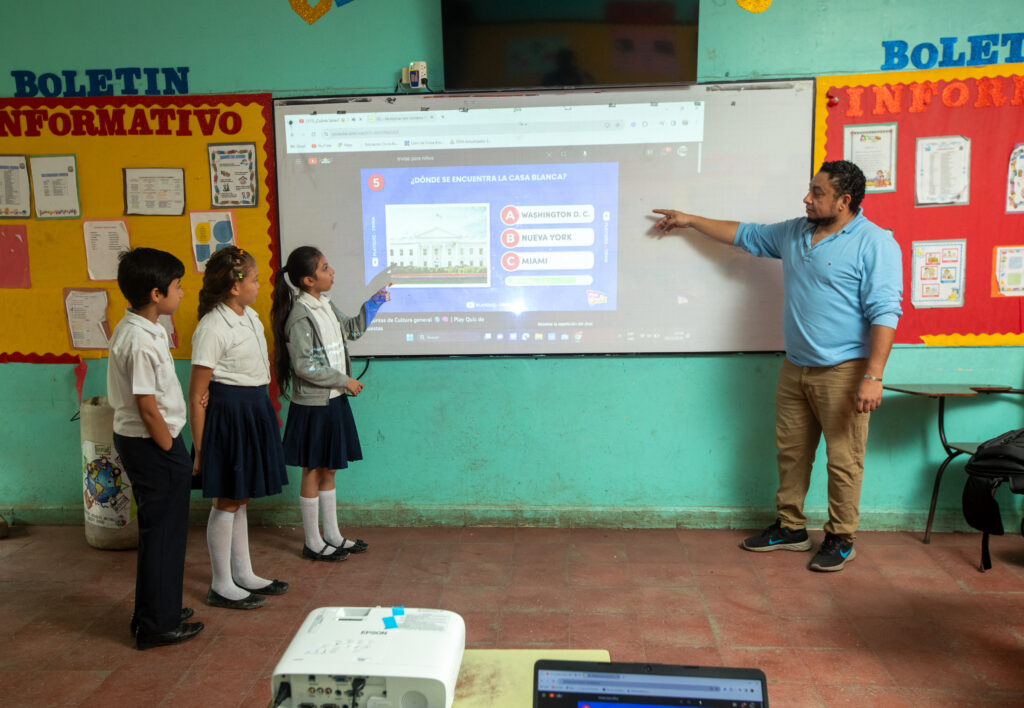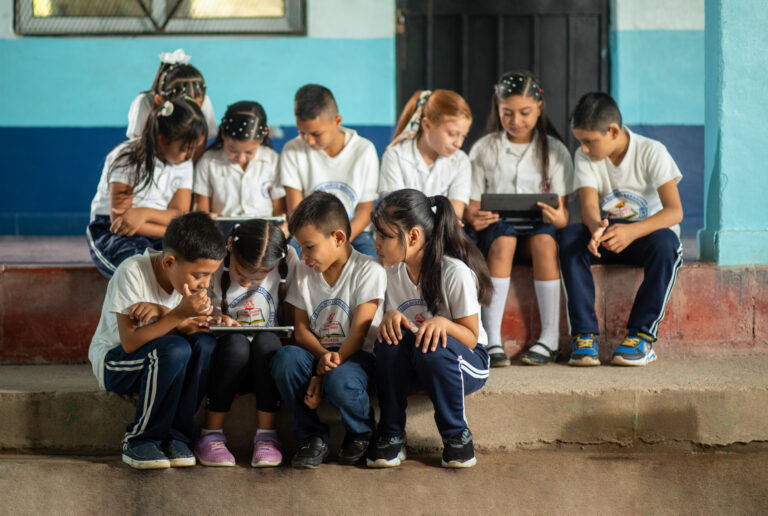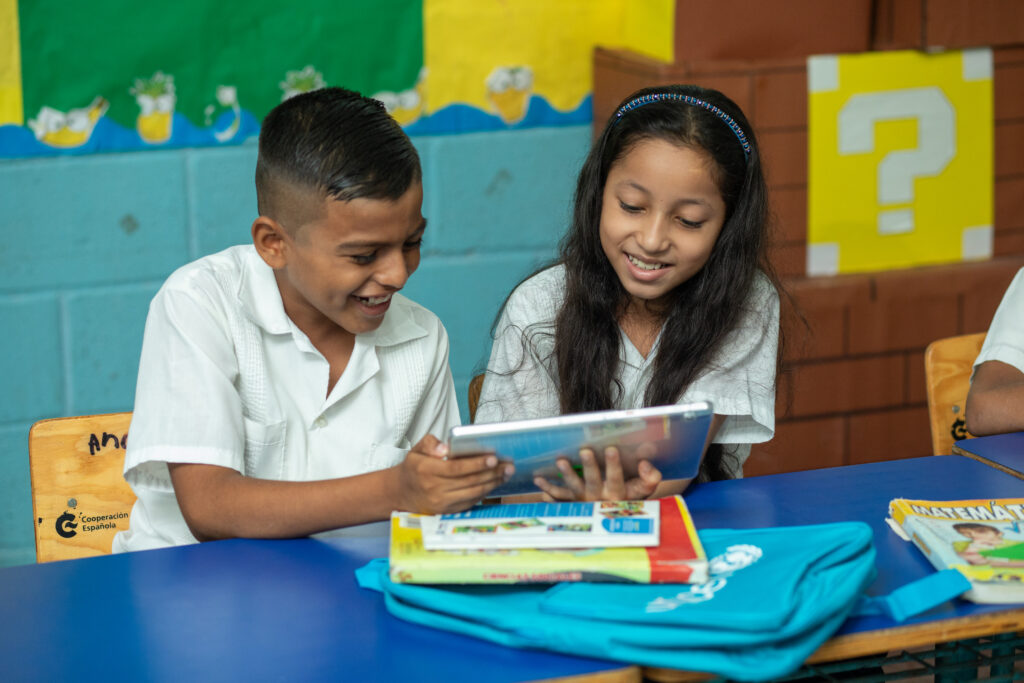In the farming community of Villanueva, Honduras, famous for its sugarcane, businesses are planting the seeds of a digital future by paying for the internet connection in a local school. Thanks to their support, students like Samantha, 10, are experiencing online learning for the first time.
“Using a tablet in class, I’m learning to add, multiply and read stories very fast with videos and interactive courses,” she said. “Technology is in our school now.”
The school in Villanueva is one of 40 that were connected with the help of Giga, the ITU-UNICEF initiative that seeks to connect every school in the world to the internet by 2030. Giga’s work in Honduras provides a useful example of one way to finance school connectivity amid limited public funding: the community contribution model.
This model enables local businesses to piggyback on a school’s internet access, opening up the online distribution of products and services. With their increased profits, the businesses pay the monthly connection fee directly to the internet service provider (ISP).
The result, in theory, is a virtuous circle in which a connected school boosts learning and opportunity for students as well as economic growth for the community.
Giga selected the schools in the pilot project using UNICEF’s mapping and ITU’s infrastructure modeling to locate their proximity to fiber optic service.

(©UNICEF/Honduras/2023)
Setting Up the Model
The decision to pursue the community cooperation model was made by Giga based on a study of financing options with Boston Consulting Group, the knowledge partner, called “Meaningful school connectivity: An assessment of sustainable business models.”
A tradition of cooperativism in Honduras, typically in the agricultural sector, played an important part in the decision. As ITU noted in a subsequent 2022 study on competitiveness in the Honduran internet market, this experience in community organizing can “take an active part in the implementation and operation of internet services.”
“We built a management team in each school with principals and teachers, key members of the community, cooperatives and councils,” said Daniel Contreras, UNICEF’s country representative in Honduras. “These management teams designed a plan to integrate local businesses.”
Twenty months later, the results of the project underscore its potential.
Small businesses, ranging from restaurants to school supplies, have succeeded in paying for the internet connection in 40 per cent of the original cohort. Another 15 per cent with a community model in place have struggled and lost service, but plan to reconnect in the coming months. Of the remaining schools, 25 per cent now receive public funding, while 20 per cent are not connected at all. Efforts are underway to find public or private funding to add them to the network.
Overall, community business is responsible for the largest percentage of sustained connectivity for the 40 schools. The total number connected could reach 80 per cent, counting those with public support and providing the 15 percent that fell behind in payments can regain access.

(©UNICEF/Honduras/2023)
Much-Needed Progress

(©UNICEF/Honduras/2023)
Rural Schools on Hold

